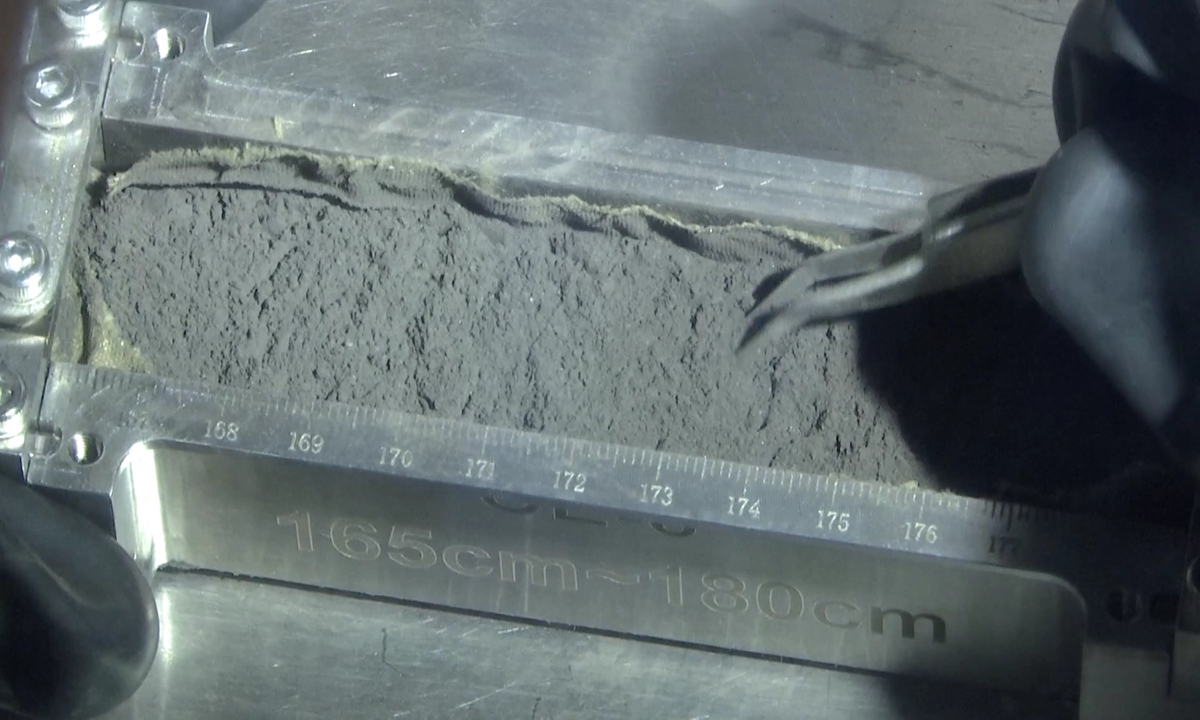
Chang'e-6 lunar samples have been unsealed. Photo: VCG
China's lunar exploration program will carry out two more launch missions to lay the groundwork for the International Lunar Research Station (ILRS), with the first launch expected to take place as early as 2026, announced the China National Space Administration (CNSA) on Tuesday.
According to the plan, China will launch the Chang'e-7 mission in 2026 and the Chang'e-8 mission around 2028, China Central Television (CCTV) reported on Tuesday.
Chang'e-7 will survey the environment and resources of the lunar South Pole, while the Chang'e-8 mission will focus on validating technologies for in-situ resource utilization on the moon, laying the foundation for the future construction of the ILRS, which is expected to be established by around 2035, said Bian Zhigang, deputy director of the CNSA.
The construction of the ILRS, jointly initiated by China and Russia, will be divided into two phases.
In the first phase, a basic model of the station will be established at the lunar South Pole region, capable of conducting scientific operations within a radius of 100 kilometers. This phase will utilize an integrated information network between the Earth and the moon to enable interconnectivity and interoperability among various missions, including unmanned lunar exploration, manned lunar landings, and international cooperation. This phase will feature a comprehensive lunar research platform with essential functions.
The second phase will focus on expanding the station's capabilities, with the goal of establishing a comprehensive lunar station network by 2050. This network will be centered around the lunar South Pole station, with a lunar orbital station as the hub, and exploration nodes at the lunar equator and the far side of the moon. The station will have a large-scale, multifunctional research platform that operates continuously with long-term unmanned and short-term manned missions.
As for whether it will be possible to access the internet or live on the moon, Guan Feng, deputy director of the CNSA Lunar Exploration and Aerospace Engineering Center, revealed that the Chang'e-8 mission will consider communication capabilities.
"There will definitely be wireless networks and energy on the moon, and scientists are still researching the feasibility of growing vegetables there, an area where the Chang'e-8 mission may conduct scientific studies," Guan said.
In September, Senegal along with several African institutions announced their participation in the ILRS program, bringing the total number of members of the moon base to more than 10 countries and over 40 international organizations worldwide.
To date, Venezuela, Belarus, Pakistan, Azerbaijan, South Africa, Egypt, Nicaragua, Thailand, Serbia, Kazakhstan and Senegal have joined China and Russia as part of the venture. US-based and European organizations have also joined the program, including the Hawaii-based International Lunar Observatory Association, Swiss company Nano-SPACE for Cooperation, and France's Thales Group.
Global Times




